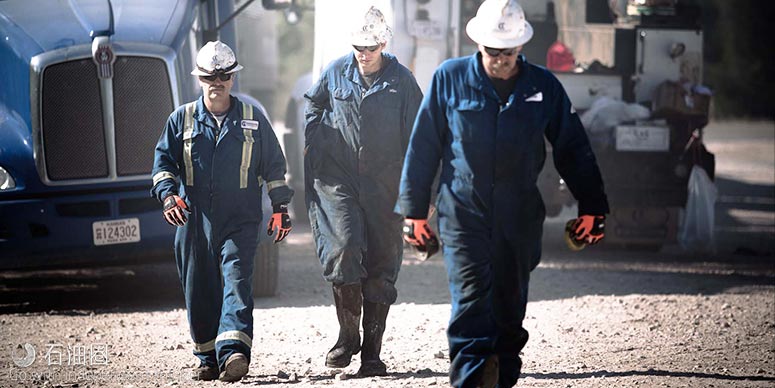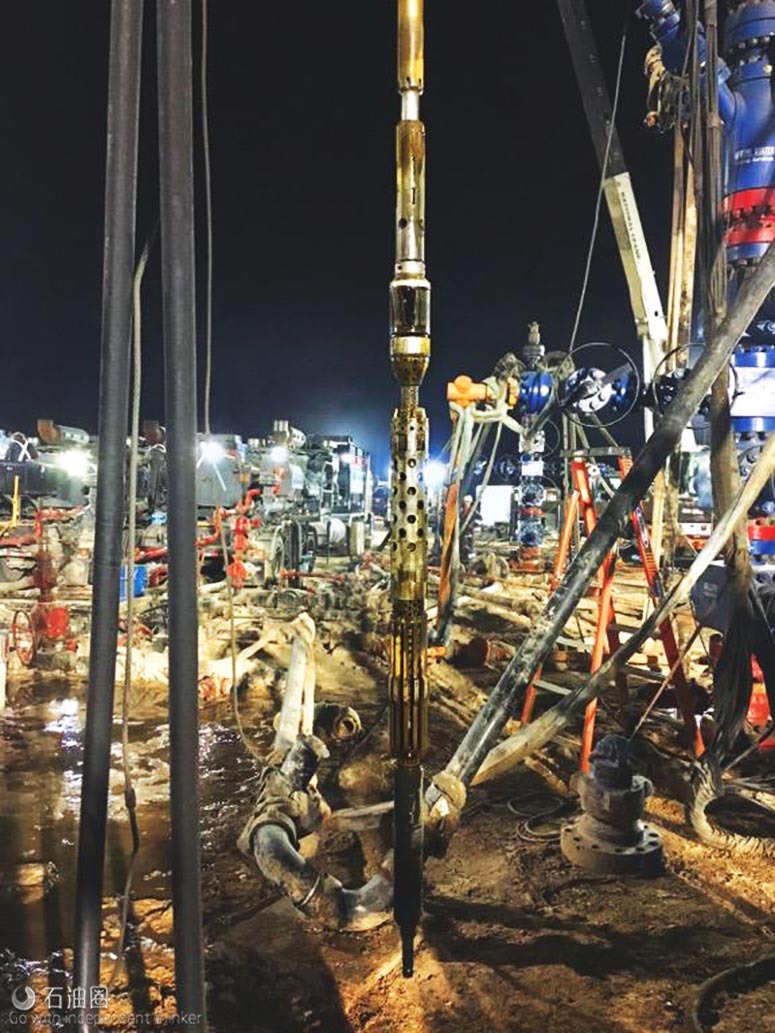To improve well economics for unconventional wells, many operators are pursuing high-intensity completions with more formation entry points and more proppant per lateral foot. Only a few years ago a 5-million- pound stimulation was considered a big completion. Now 10-million-pound jobs are not uncommon, and some operators are testing much larger completions. The driving force is the belief that these larger volumes create more stimulated reservoir volume, which translates to higher IP. Along with higher intensity, operators also are drilling extended laterals of 3 km (2 miles) or more when lease arrangements permit in hopes of achieving higher EURs and improved financial returns.
The stimulation method of choice for high-intensity completions has been multicluster plug and perf (PNP) because it employs the high pump rates commonly believed to be necessary for the big fracturing jobs. PNP was the preferred stimulation method when the shale revolution began, and it is still used to complete most unconventional wells.
Pinpoint fracturing on coiled tubing (CT) was introduced in 2006 using high-velocity sand jetting to perforate casing. Fluid and proppant were then pumped down the annulus between the CT and the casing to fracture each single “cluster” at a time. This pinpoint method offered more control over fracture location and placement than PNP. Four years later, NCS Multistage released cemented casing sleeves, allowing pinpoint fractures to be executed more quickly and efficiently than with jet perforating. Since 2010 the NCS Multistage CT fracturing system has been used to complete more than 7,800 wells in unconventional plays worldwide, with more than 120,000 NCS casing sleeves used to place fractures.
Pinpoint fracturing
Although PNP is still the most common stimulation method for multistage completions, pinpoint fracturing on CT is the system of choice in many fields in Canada. Pinpoint fracturing also is gaining acceptance in the U.S. because it offers features and capabilities that can improve near-term and long-term well performance compared to PNP completions.
NCS Multistage pinpoint fracturing provides consistent, repeatable fracture placement along the entire lateral of each well and from well to well, helping operators optimize the stimulation design and field development plan for a given field and formation. Locations of fracture initiation and the amount of proppant and fluid pumped into each fracture are verifiable and consistent because pinpoint fracturing treats a single cluster at a time. Pinpoint cluster efficiency can be essentially 100%, while PNP cluster efficiency has been shown to be much lower, with as many as 40% of clusters contributing little to production.
The pinpoint bottomhole assembly (BHA) incorporates gauge/recorders that collect pressures and temperature data above and below the bridge plug that isolates the zone being fractured from the wellbore below. The recorded pressures and temperatures are analyzed after a completion to evaluate the treatment, providing insights about the presence and type of communication between stages and more.
NCS’s MultiCycle sleeves can be opened and closed as needed, allowing wellbore control during completion and enabling options during production, including remediation, refracturing and EOR strategies. PNP wellbores are “open once, forever.”
CT in the wellbore provides forward and reverse circulation capability that enables fast, efficient wellbore cleanout following screenouts, allowing operators to aggressively stimulate the well with minimal risk.
The CT string transmits actual fracture- zone pressure to surface throughout the treatment, allowing operators to monitor fracture progression in real time and providing accurate pressures for improved fracture modeling and execution.
High-intensity capabilities
Pinpoint fracturing is not commonly thought of as having the capability to deliver high-intensity completions. However, recent technology developments and field performance are changing that perception as operators are successfully combining the benefits and features of pinpoint fracturing with the economics of high-intensity completions.
High-intensity completions require a lot of proppant. NCS pinpoint fracturing has placed as much as 15 million pounds of sand per well, demonstrating the robustness and durability of the downhole fracture isolation assembly.
A key to high intensity is increasing the number of stages and putting them closer together. At the same time, the goal is to prevent communication between stages that can reduce the effectiveness of the stimulation. As many as 156 sleeves have been installed in a well, which is equivalent to 39 PNP stages with four clusters per stage.
The bottomhole pressures and temperature data stored by the BHA gauge/recorders are used to detect and characterize any communication between the target zone and the wellbore below. This information helps operators establish minimum stage spacing and maximize stimulated reservoir volume—the goal of high-intensity completions.
Question of fluid rates
With pinpoint fracturing CT in the wellbore necessarily limits the maximum flow rate compared to PNP, which uses the full inside cross section of the casing to pump fracturing fluid and proppant downhole. PNP operations reach flow rates of 100 bbl/min and higher if sufficient pumping horsepower is available. For comparison with pinpoint fracturing, the total fluid rate down casing with PNP should be divided by the number of clusters taking fluid. For example, 100 bbl/min into four clusters would be roughly equivalent to 25 bbl/ min into each cluster. In comparison, pinpoint fracturing achieves higher injection rates per fracture because injection is focused on a single cluster.
NCS Multistage has streamlined the flow profile of the upper BHA to allow higher flow rates. The calculated maximum flow rate now approaches 80 bbl/min per fracture initiation point in 5.5-in. casing and 50 bbl/ min in 4.5-in. casing.
Intensity without well bashing
A concern as operators strive to optimize well spacing for high-density development is well bashing, which occurs when one cluster in a multicluster stage breaks down first and takes more of the fluid/proppant than the other clusters, becoming a “super cluster” that grows significantly beyond the design fracture halflength and propagates into a nearby producing well, potentially reducing production and damaging the lift equipment. The well-bashing problem becomes more acute as well downspacing becomes more prevalent.
Operators can employ defensive measures to protect existing producers, ranging from closing in wells to pressuring them up (if possible) to establish a “pressure shield” around them. However, these options also carry risk and add to overall cost. The best strategy is to prevent well bashing entirely by placing designed fractures with a controlled length. As mentioned previously, pinpoint fracturing treats only a single cluster at a time, so operators can monitor exactly how much fluid and proppant is pumped into each fracture. The result is consistent fracture treatments along the length of the lateral, minimizing the risk of super clusters or runaway fractures.
Lateral lengths continue to grow in unconventional completions as operators seek to improve well economics, and 3-km laterals are common where lease arrangements permit. Pinpoint fracturing has kept pace, using a combination of operating techniques and improved technology. The use of toe ports and pumpdown methods has greatly extended the reach of CT in horizontal laterals. To date, NCS Multistage pinpoint technology has successfully completed 30 wells with lateral lengths of 3 km or more, with the longest being 4,069 m (13,352 ft).
As operators continue to test higher completion intensities, longer laterals and higher well densities, pinpoint fracturing on CT qualifies as the completion method of choice because it enables them to achieve their production and economic goals while helping them optimize well completions and field development, avoid well bashing and gain the benefits of wellbore management over the life of the well.

 石油圈
石油圈

